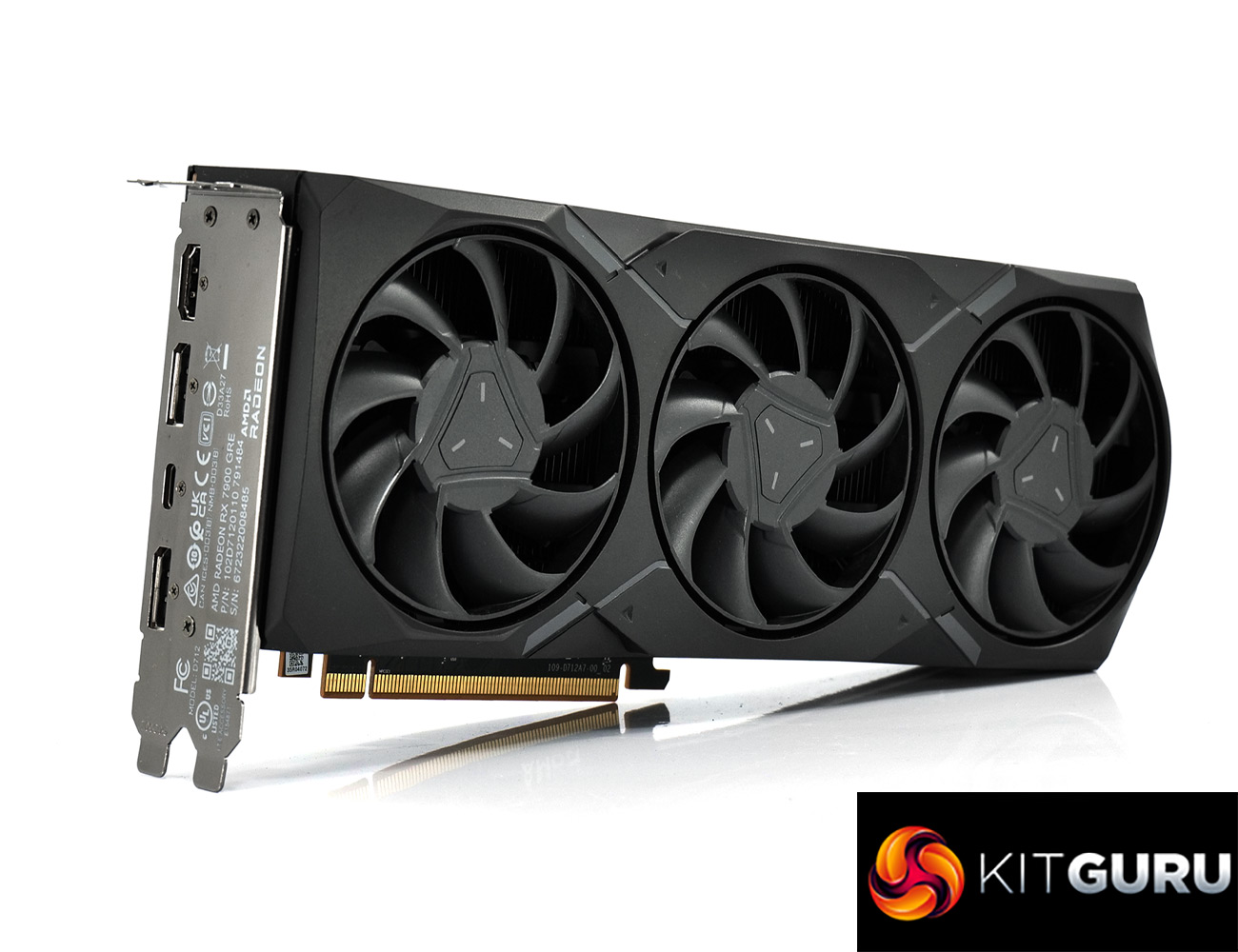The RX 7900 GRE is an interesting graphics card, first launched as an exclusive for the Chinese market in July 2023, but AMD is now announcing worldwide availability for this GPU starting tomorrow, February 27th, with a retail price of $549.
While the RX 7900 GRE is built on the Navi 31 die as per the RX 7900 XT and 7900 XTX, it is significantly cut down, featuring fewer cores, but crucially two of the six Memory Compute Dies (MCDs) have been disabled, reducing VRAM to 16GB and also lowering memory bandwidth. Even with that in mind, the performance of the 7900 GRE is much closer to that of the RX 7800 XT, as we saw it comes in 8% faster on average at 1440p, while it is 18% slower than the RX 7900 XT. We're also looking at basically identical raster performance to the RTX 4070 Super, while it's 6% slower than the vanilla RTX 4070 Ti.
The comparison against the RX 7800 XT is particularly interesting, given the 7900 GRE actually offers 33% more cores and a similar memory configuration. Yes, it does clock a bit slower overall and memory speed is at 18Gbps, not 19.5Gbps as with the 7800 XT, but it's still a relatively small performance increase given it packs in a third more SMs. It certainly appears that the memory configuration is struggling to adequately feed the increased number of cores, while it's also possible the relatively conservative 260W power limit is a factor too.
Things do scale slightly differently when ray tracing is enabled, as we saw the 7900 GRE outperform the 7800 XT by 12% on average over the eight games tested. That said, it is clear that anyone who values ray tracing performance is better served by an Nvidia GPU, given the 7900 GRE is 12% and 24% slower than the RTX 4070 and RTX 4070 Super, respectively. Those Nvidia GPUs also offer support for DLSS, which we believe is a superior upscaling technology to AMD's FSR solution.
While AMD's board partners have released a number of partner cards for the 7900 GRE's global launch, today we have assessed the reference model and found it to deliver decent results. Thermals are kept in check by the triple-fan cooler, and it is pleasingly quiet, but we will wait to see how the likes of Gigabyte and Sapphire can improve on the MBA design.
Power draw is also a touch lower than the rated 260W TBP, averaging 248.2W across the twelve games we tested at both 1440p and 4K resolution. That means performance per Watt is a hair better than the RX 7800 XT, but on par with the RX 7900 XT, and RDNA 3 still lags behind Ada Lovelace in terms of overall efficiency, by about 19% when compared against the RTX 4070 Super.
On reflection then, the RX 7900 GRE isn't necessarily a bad product, but it's not a particularly great one either. I can understand that AMD probably has a good chunk of Navi 31 dies that didn't make the cut to be sold as RX 7900 XTs which is why the RX 7900 GRE is a thing, but I wouldn't necessarily say it has improved AMD's competitveness in the mid-range market segment.
In fact, I'd argue that AMD is in a slightly worse position now than it was two months ago, all due to the strength of Nvidia's 40-series Super refresh. From September to December last year, AMD's RX 7800 XT offered performance that was 7% faster on average than Nvidia's $600 product (the original RTX 4070), while also costing $100 less. Today, the RX 7900 GRE is no faster than Nvidia's new $600 product (the RTX 4070 Super) and it's also only $50 cheaper.
I think you could have made a much more convincing argument to pick the 7800 XT over the 4070 two months ago, than you can today for the choosing the 7900 GRE over the 4070 Super, given Nvidia's strength when it comes to ray tracing performance, support for DLSS, and overall efficiency. The main reason to opt for the RX 7900 GRE instead would be for the larger framebuffer, which is certainly a valid point, but I don't think it's a big enough selling point to ignore all the other advantages Nvidia has up its sleeve.
That leaves me thinking AMD's line-up is in need of some price adjustments to keep things more competitive. If the RX 7900 GRE restored a $100 price differential between itself and the 4070 Super, then it would instantly look a lot more attractive. As things stand, I imagine most buyers would be happy paying a $50 premium for the RTX 4070 Super given its aforementioned advantages.
We don't yet have a buy link for the AMD RX 7900 GRE but it will be on sale from February 27th, with a $549 MSRP. UK pricing is not yet confirmed at the time of writing.
Pros
- Solid raster performance that works well for 1440p Ultra gaming.
- Slightly better value than 4070 Super for rasterisation.
- 16GB VRAM.
- Reference card runs fairly cool and quiet.
Cons
- Not as appealing vs the competition as the 7800 XT was two months ago.
- RTX 4070 Super is only $50 more but offers much better ray tracing performance and support for DLSS.
- Overall efficiency still lags behind the 40-series.
KitGuru says: The RX 7900 GRE isn't a bad product, it just isn't priced as competitively as it needs to be to take on Nvidia's RTX 4070 Super.
 KitGuru KitGuru.net – Tech News | Hardware News | Hardware Reviews | IOS | Mobile | Gaming | Graphics Cards
KitGuru KitGuru.net – Tech News | Hardware News | Hardware Reviews | IOS | Mobile | Gaming | Graphics Cards




